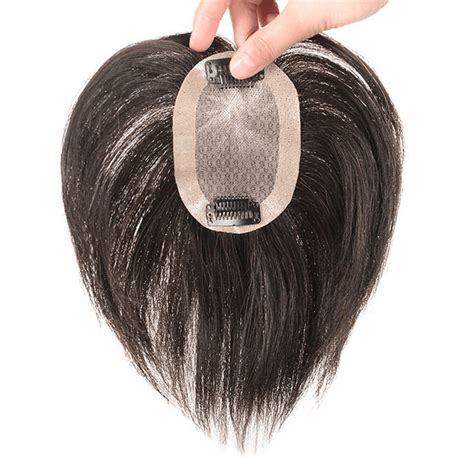Addressing the Issue of Male Thinning Hair
Thinning hair is a common concern among men, affecting approximately 50% of men by the age of 50 and over 80% by the age of 70, according to the American Academy of Dermatology. This condition can cause significant distress and negatively impact self-confidence.

Hair Toppers: A Solution for Women…But What About Men?
Hair toppers are a popular solution for women seeking to conceal hair loss or thinning hair. These devices, also known as toppers, are volumizing pieces that attach to the crown of the head, providing natural-looking coverage. However, the question arises: can men wear women’s hair toppers for thinning hair?
Exploring the Options for Men
While women’s hair toppers are designed for the female hair texture and follicle patterns, they may not be suitable for men’s hair without modifications. The following are key considerations for men looking to use women’s hair toppers for thinning hair:
1. Size and Shape
Women’s hair toppers are typically smaller than those needed to cover male thinning areas. Additionally, the shape may not match the contours of a man’s head, resulting in an unnatural look.
2. Hair Density and Texture
Men’s hair is generally denser and coarser than women’s hair. Using a women’s hair topper with a hair density that is too low may not provide adequate coverage. Similarly, the texture of the hair topper may not blend seamlessly with the recipient’s hair.
3. Base Material and Attachment
Women’s hair toppers typically use a lighter base material, such as lace or mesh, to minimize visibility. This material may not be sufficient to withstand the weight of men’s hair or the stress of daily activities.
Tailoring Women’s Hair Toppers for Men
To address these challenges, men who wish to use women’s hair toppers may need to consider the following modifications:
1. Customization
Working with a professional hairstylist or wig expert can help men customize a women’s hair topper to fit their head size, shape, and hair texture. This may involve adjusting the size, density, and attachment method.
2. Attachment Options
Traditional hair topper attachment methods, such as clips or combs, may not be ideal for men with thinning hair. Adhesive systems, such as tapes or liquid adhesives, may provide a more secure hold and reduce visibility.
3. Blending Techniques
To achieve a natural-looking result, stylists can use hair cutting and coloring techniques to seamlessly blend the hair topper with the recipient’s hair.
Alternative Solutions for Men with Thinning Hair
In addition to women’s hair toppers, several other options are available for men experiencing thinning hair:
1. Minoxidil and Finasteride
These prescription medications are clinically proven to slow or stop hair loss and promote hair growth. However, they may have side effects and require consistent use.
2. Hair Transplantation
This surgical procedure involves transferring hair follicles from a donor area to the thinning area. The results are permanent, but it can be expensive and require multiple sessions.
3. Microblading and Hair Thickening Fibers
These non-surgical techniques can create the illusion of thicker hair. Microblading implants color pigments into the scalp, while hair thickening fibers attach to existing hair strands.
Conclusion
While women’s hair toppers may not be an ideal solution for all men with thinning hair, they can be adapted with modifications to provide coverage and restore self-confidence. Men should consult with a professional hairstylist or wig expert to determine the best options for their individual needs and preferences. By embracing a proactive approach and exploring the range of available solutions, men can address the challenges associated with thinning hair and achieve a more satisfying appearance.
